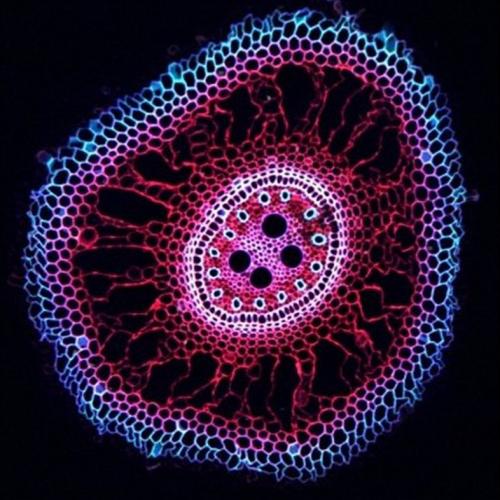Copy Link
Add to Bookmark
Report
Alife Digest Number 087

Alife Digest, Number 087
Tuesday, October 6th 1992
~~~~~~~~~~~~~~~~~~~~~~~~~~~~~~~~~~~~~~~~~~~~~~~~~~~~~~~~~~~~~~~~~~~~~~~~~~~
~ Artificial Life Distribution List ~
~ ~
~ All submissions for distribution to: alife@cognet.ucla.edu ~
~ All list subscriber additions, deletions, or administrative details to: ~
~ alife-request@cognet.ucla.edu ~
~ All software, tech reports to Alife depository through ~
~ anonymous ftp at ftp.cognet.ucla.edu in ~ftp/pub/alife (128.97.50.19) ~
~ ~
~ List maintainers: Liane Gabora and Rob Collins ~
~ Artificial Life Research Group, UCLA ~
~ ~
~~~~~~~~~~~~~~~~~~~~~~~~~~~~~~~~~~~~~~~~~~~~~~~~~~~~~~~~~~~~~~~~~~~~~~~~~~~
Today's Topics:
Calendar of Alife-related Events
MicroGA for windows
Submission for Alife Digest
lamarckian evolution
----------------------------------------------------------------------
Date: Wed, 30 Sep 92 17:29:17 -0700
From: liane@CS.UCLA.EDU (Liane Gabora)
Subject: Calendar of Alife-related Events
**********************************************************************
9th Brazilian Symposium on AI, Rio de Janeiro Oct 5-8, 1992 v79
Worshop on Neural Networks, Liverpool, England Sep 7-8, 1992 v74
Parallel Problem Solving from Nature, Brussels Sep 28-30, 1992 v77
State of the Art in Ecological Modelling, Kiel Germany Sep 28-Oct 2, 1992 v82
Neural Processing Information Systems (NIPS), Denver Nov 28-Dec 3, 1992 v73
Simulation of Adaptive Behavior, Honolulu, Hawaii Dec 7-11, 1992 v74
Conference on Complex Systems, Canberra Australia Dec 14-15, 1992 v84
International Conference on System Sciences, Hawaii Jan 5-8, 1993 v74
Conf on Neural Networks, San Francisco CA Mar 28-Apr 1, 1993 v79
Conf on Fuzzy Systems, San Francisco CA Mar 28-Apr 1, 1993 v79
AI and Simulation of Behaviour Conf, Birmingham UK Mar 29-Apr 2, 1993 v75
Intnl Conf on Neural Nets and GAs, Innsbruck, Austria Apr 13-16, 1993 v80
BEAM Robot Olympics, Toronto Canada Apr 22-25, 1993 v81
European Conf on ALife, Brussels May 24-26, 1993 v82
Intnl Workshop Neural Networks, Barcelona Spain June 9-11, 1993 v76
Intelligent Systems for Molecular Biology, Washington July 7-9, 1993 v84
Fifth Intnl Conf on GAs, Urbana-Champaign IL July 17-22, 1993 v80
(Send announcements of other activities to alife@cognet.ucla.edu)
**********************************************************************
------------------------------
From: emergent@aol.com
Subject: MicroGA for windows
Date: Fri, 02 Oct 92 17:09:13 EDT
Emergent Behavior is happy to announce that MicroGA is now available for the
IBM PC and compatible computers. Until now MicroGA has only been available
for the Macintosh. Now there is a version which takes advantage of the
Microsoft Windows OS.
MicroGA is a C++ Framework for solving problems using Genetic Algorithms. It
includes 3 sample programs, over 95 pages of documentation, and a C++ code
generator to get you going quickly.
Price: $249.00
For More Info Contact
Steve Wilson
635 Wellsbury Way
Palo Al
to, CA 94306
(415)494-6763
emergent@aol.com
------------------------------
From: Chris Kacoroski <ski@atc.boeing.com>
Date: Thu, 1 Oct 92 05:43:49 PDT
Subject: Alife and Design of Decentralized Information Systems
Hi,
I am interested in very large, decentralized information systems and
am wondering if anyone has looked into applying alife concepts in the
design of these systems. All the alife stuff I have seen seems to be
used in modeling systems, not in the design of a system. Appreciate
any references. Thanks.
Cheers,
Chris "ski" Kacoroski "When we try to pick out anything by itself
ski@atc.boeing.com we find it connected to the entire universe"
John Muir
------------------------------
Date: Thu, 1 Oct 92 11:26:06 -0700
From: pauld@cs.washington.edu (Paul Barton-Davis)
Subject: lamarckian evolution
Nick Szabo (szabo@techbook.com) writes:
A comment about artificial Lamarckian evolution on another
forum intrigued me into writing the following response:
> While it's certainly conceivable to design a self-reproducing
> machine that inherits acquired characteristics (consider the
> self-reproducing program that disassembles its running core image),
> but I don't see why you'd want to build one.
It adds another feedback loop to the search algorithm that is
evolution. For example, if that core contains the password file,
it might be very beneficial to an evolving network worm if it
incorporates that information into its and its descendants' code.
Under a non-Lamarkian genetic algorithm the baby worm has to build
its own password files from scratch. On the other hand, if password files
change too quickly, the genetic code could become too bulky to be useful,
so Lamarkian evolution might need to be accompanied by some purging
mechanism.
I have been "playing" with a tierran ancestor that can undergo a
subtle form of lamarckian evolution. It uses the protection bits that
exist for each tierran instruction to set up 3 different regions: one
that is read-only, one that is read-write and one that is
read-write-execute. The only code to execute is in the last section,
and this plays the role of (1) performing the reproductive cycle (2)
copying the read-only section to the read-write section (3) copying
the read-write section into itself. Each of these roles are subject to
error and/or mutations. The result is that changes occuring during
normal functioning (i.e. a modification in the read-write-execute
section) become part of a new offspring.
This is only a variation on the DNA/RNA/protein theme of organic life.
It differs from conventional tierran evolution in the sense that it
incorporates a notion similar to maternal inheritance via the oocyte.
A new tierran individual could have the same DNA as its
grandparent(s), yet behave quite differently. Why ? Because its
parent underwent a mutation or error that gave rise to a new
instruction sequence in its executable section, and that section is
passed down during reproduction. So, the offspring's actual operation
may be very different from its grandparent, even in the absence of
actual genetic ("read-only") changes.
Unfortunately, other duties right now mean that I don't have too much
to report on the results, except it does *greatly* accelerate
evolution (when measured by new persistent cell types).
-- paul
------------------------------
End of ALife Digest
*******************



















